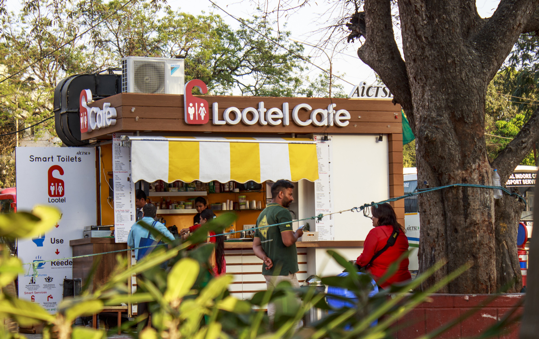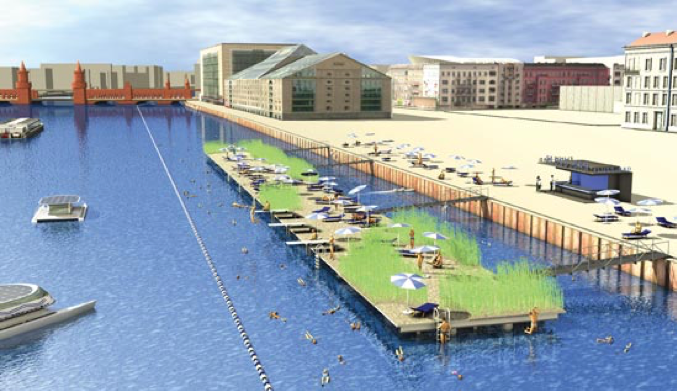WHAT IF... you created additional offers that generate revenues by subsidising your WASH business?
Business ventures with the potential of solving pressing socio-environmental challenges (sanitation provision, waste management etc.) can struggle to make their products/services profitable, despite the value that these bring to society. In such cases, they may resort to funding from either public (government agencies) or private donors who recognise the value of their products/services. However, there are alternative routes for securing the sustainability of a business that don’t depend on donor funding. The Lifeline Strategy identifies profitable revenue streams that can subsidise part or all of the less/non-profitable activities. These additional revenue streams can be linked to the socio-environmental core offer itself or come from a completely different product or service.
Turning challenges into opportunities
Many environmental social start-ups face the problem that the operational costs of their service or product are very high. Unless these are fully or partly subsidised, they would naturally have to be transferred to the end-user. If the end-user, however, does not want to pay a high fee for the service/product (as is often seen with improved sanitation services) or simply cannot afford it (generally customers with low purchasing power) the business cannot be financially viable (DEWHURST et al. 2019). If a business cannot or does not want to rely on donor funding to subsidise their impact (competition for funds tends to be high and application processes time consuming and tedious), it has to think outside the box and seek innovative ways of increasing its revenues streams to be successful.
Moving towards a strategy
The Lifeline Strategy identifies additional revenue streams from profitable products or services with the aim of making the business self-sufficient and sustainable. It is based on the business concept of cross-subsidising, where support for one product comes from the profits generated by another product (BUSINESS DIRECTORY no year).
The Lifeline Strategy can be divided into two types: 1) The Direct Lifeline Strategy and 2) The Alien Lifeline Strategy. Both these types are characterised by a need to create new revenue streams to fully or partially subsidise the least profitable activities that your company is involved in.
The Direct Lifeline Strategy falls under the concept of cross-selling in which additional products or services are offered to the customers from the same selling platform - increasing convenience for the customer (since they can get more than one product from the same place) and creating new revenue streams for the business with few structural alterations (BUSINESS MODEL NAVIGATOR, no year). This is cost-effective for the company and makes it easy to subsidise its less profitable activities. One typical example is selling hygiene and other products from water kiosks.
Where adding new products or services to the already existing business model is not an option, The Alien Lifeline Strategy can be an equally beneficial solution. This second type of the strategy builds an aggregated business model for a service or product sold separately, often unrelated to the core activity of the business. This new service or product that is being offered, generates enough revenue to cover both its own costs and those of the main initiative. The customer segmentation in the latter type would tend to be one that is more inclined to buying the service/product that is offered if she/he knows it will have a positive socio-environmental impact.
A positive aspect about the Direct Lifeline strategy (especially for already established businesses) is that it doesn’t require drastic changes in the existing business model since the new service/product is for the same customer segment and is being sold on the same platform. Therefore, you can use the same channels for your extended business model. Customer relationships are already in place and might only need strengthening or slight adaptation to the added services/products.
For the Alien Lifeline Strategy, you might initially need to invest more resources than for the Direct Lifeline Strategy. New customer segments would have to be identified for the new product/service, meaning that resources would need to be allocated to customer relationship building and possibly identifying new channels for delivering product/service. As you will see in the example below, the customer type for this strategy might be one with a sense of social responsibility, who is whiling to support whatever social or environmental initiative the business is involved in.
Keep in mind that in order for the Lifeline Strategy to be successful, the additional service or products you sell have to have high profitability rates, especially when applying the Alien Lifeline Strategy since operational costs for the new service/product would tend to be considerably higher.
Case Study 1
Lootel Café is a start-up business in India that has several smart restrooms dotted around the city. The business provides both a modern restroom service and a food & drink service from its adjacent café. Customers pay 10 rupees for using a clean and pleasant restroom and then have the option of redeeming the fee when they buy food or drink from the café next to the restroom. Lootel Café is a perfect example of the Direct Lifeline strategy as it generates revenue from an additional service (the café) to subsidise part of its less profitable, but impactful business activities (restroom service). For customers on the other hand, the value of the service is increased since they can satisfy several needs (hunger, toilet needs) from the same place and at a reasonable price.
“Lootel Café provides a place where all the physiological and psychological needs are met in a public area” (Lootel Smart Toilet for Public, 2020)

Lootel Cafe in India. Source: Lootel Smart Toilet for Public (2020)
Case Study 2
Spree2011 was an initiative in Berlin, Germany which did not succeed. However, we still use it as a case here as it demonstrates how the Alien Lifeline strategy can be used in an innovative way. Spree2011 aimed to provide an innovative and economically feasible solution to the water pollution problems in the river Spree, which are caused by overflowing sewers when it rains. By installing a set of floating interconnected tanks right on the drainage opening point of the river, wastewater can be collected and cleaned before it is released into the river. The floating tanks can in turn serve as a space to rent out for various urban purposes including restaurants, open cinemas, playground etc. The rent as an additional revenue stream can cross-finance the non-profitable activities associated with the cleaning of the river. Although this initiative did not succeed beyond the prototyping phase, it is an excellent example of the Alien Lifeline Strategy since it identified a highly profitable revenue stream from a separate service which can partly finance a less profitable but socially valuable activity. The new service targets an entirely new customer segment, unlike in The Direct Lifeline Strategy.

Spree11 planning phase. Source: Designboom (2010)

